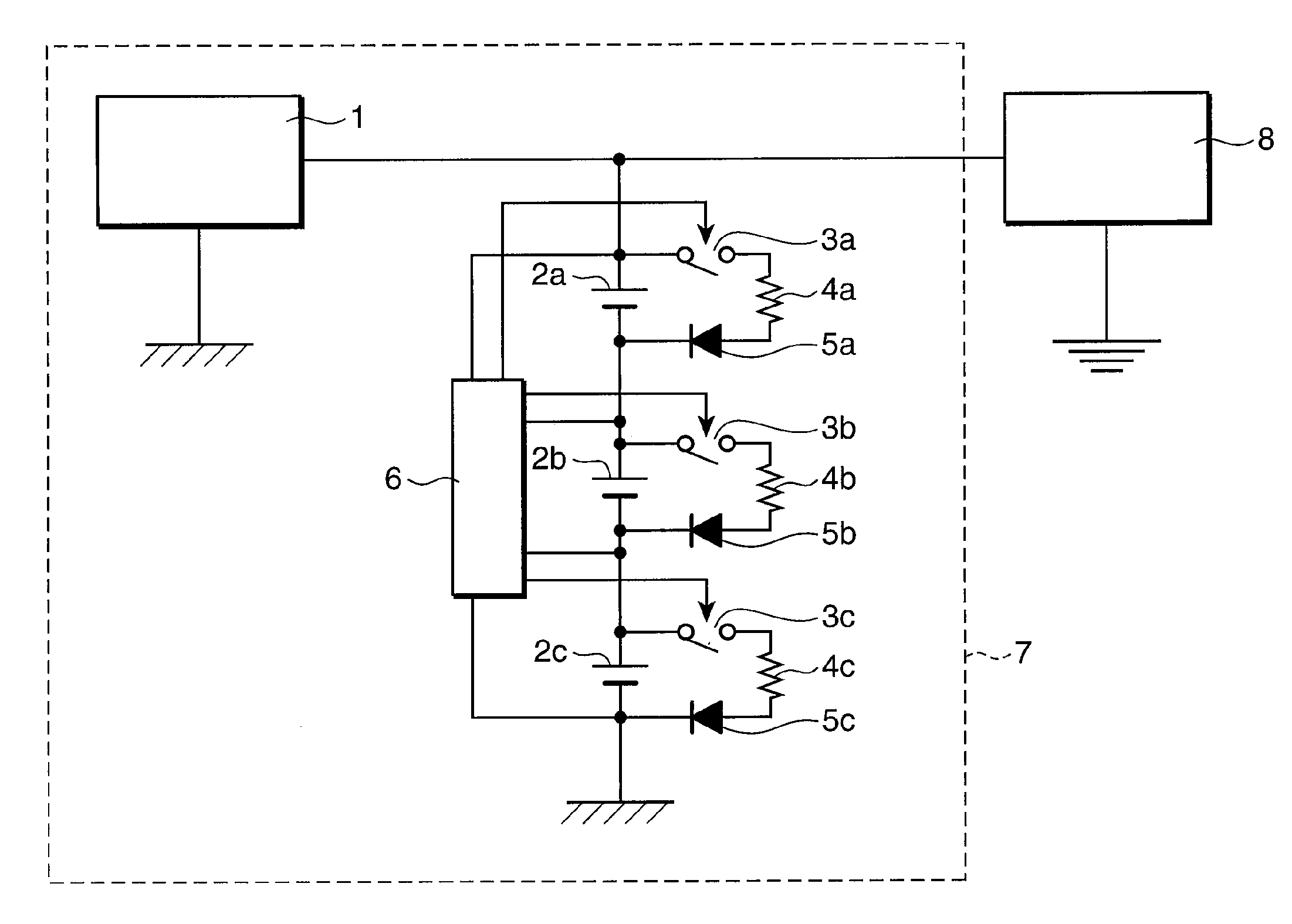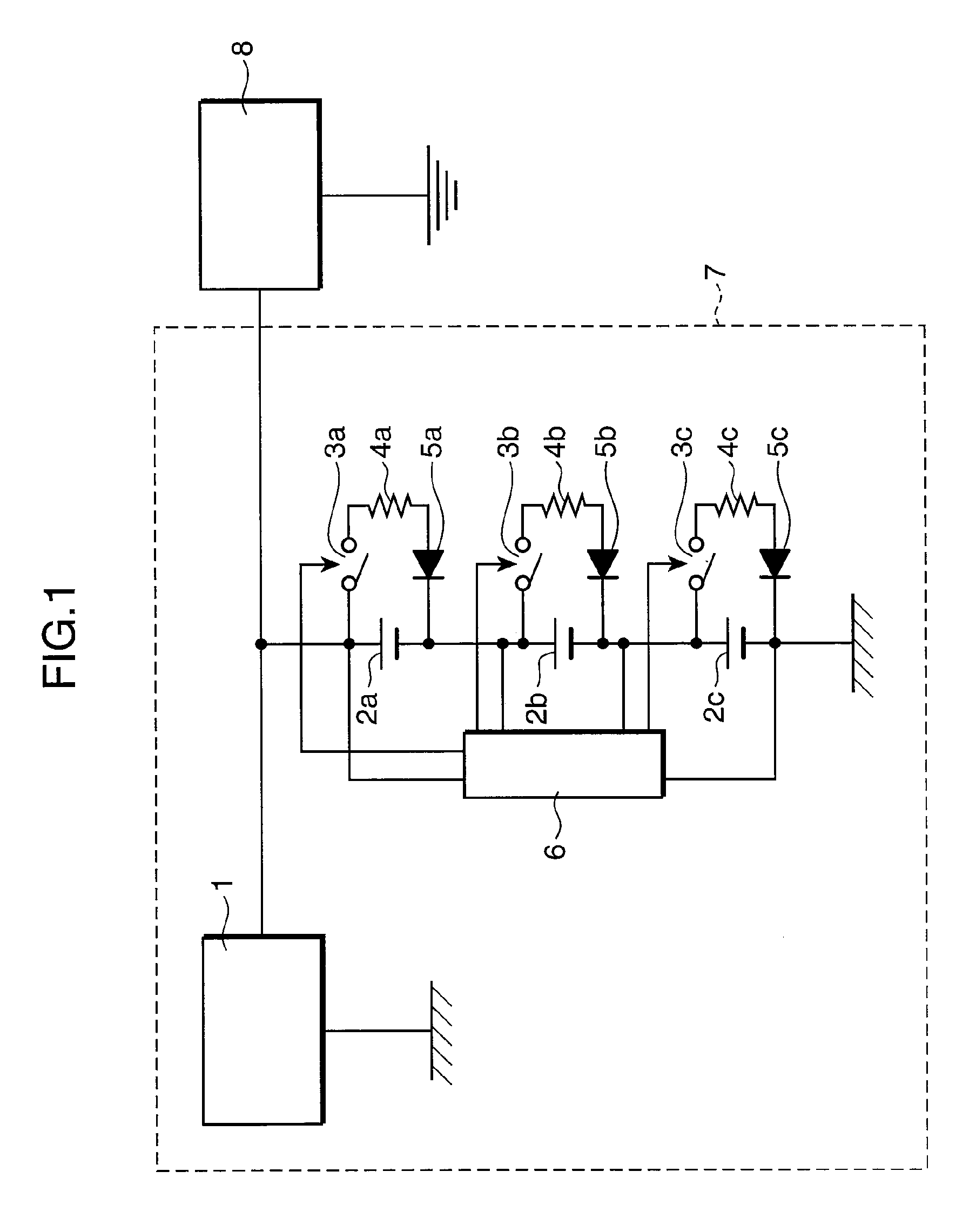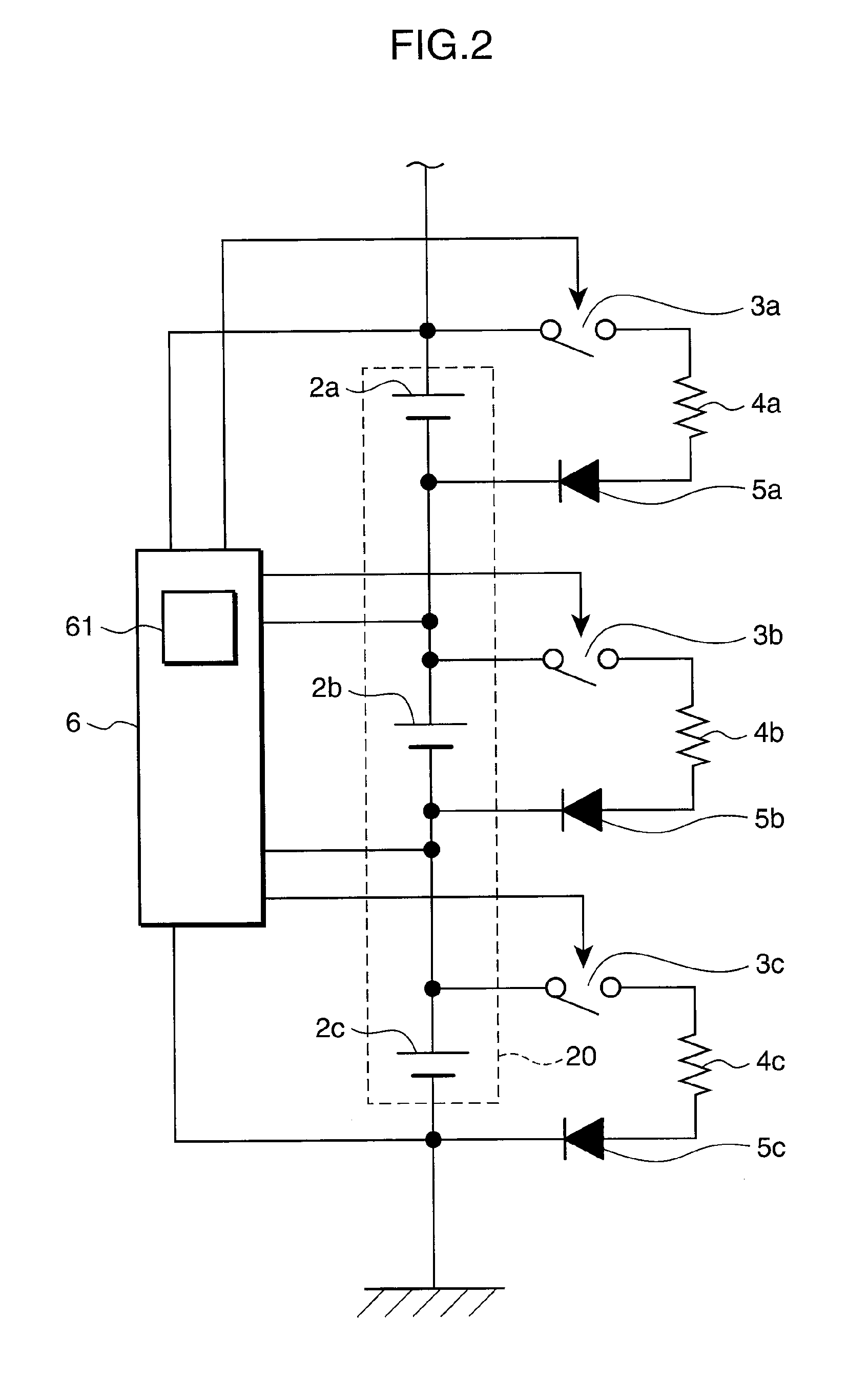Power supply system and control method of assembled battery
a power supply system and battery technology, applied in the field of power supply systems, can solve problems such as fluctuation or imbalanced charge state (soc), troublesome safety around nonaqueous electrolyte secondary batteries, and occurrence of such unbalan
- Summary
- Abstract
- Description
- Claims
- Application Information
AI Technical Summary
Benefits of technology
Problems solved by technology
Method used
Image
Examples
first embodiment
[0024]A power supply system is a power supply system that has: an assembled battery in which a plurality of cells are connected in series and which supplies power from a series circuit of the cells to a device; a power generator that parallely supplies generated power to the assembled battery and the device connected in parallel; a plurality of forced discharge units that cause the plurality of cells to forcibly discharge individually; a cell state detector that detects a state of each cell; and a controller which, when the cell state detector detects that at least one of the plurality of cells is in a first state showing that the cell is not fully charged, causes the cell detected to be in the first state to discharge by means of the forced discharge units until the cell state detector detects that the cell enters a second state having a lower state of charge than the first state.
[0025]According to this configuration, the assembled battery and the device are connected in parallel ...
third embodiment
[0050]In the lithium ion secondary battery, when the SOC after charging becomes approximately 100%, the electrolyte component (mainly carbonate) containing a nonaqueous electrolyte is decomposed easily. In the third embodiment, in order to avoid providing any more charging current from the power generator to the lithium ion secondary battery in such a state, the forced discharge start voltage Va is set at voltage slightly lower than the voltage that shows that the SOC is approximately 100% after charging, and at the same time the controller 6 measures the voltages of the individual lithium ion secondary batteries successively. When the voltage of any of the lithium ion secondary batteries reaches the forced discharge start voltage Va as a result of charging by the power generator 1, the cells are caused to forcibly discharge by forced discharge units on the basis of a command from the controller 6 until the voltage of the corresponding reaches the forced discharge end voltage Vb.
[00...
seventh embodiment
[0064]Next is described in detail the power supply system on the basis of FIG. 3 and (Table 1), assuming the case where the forced discharge start voltage Va is set at 4.1V and the forced discharge end voltage Vb is set at 3.9V. When the voltage of any of the cells 2a, 2b and 2c reaches 4.1V, the controller 6 is caused to understand the relationships shown in (Table 1), as well as the amount of electricity (18% in this case) used for the forced discharge of the cell that is obtained from the difference between the SOCs, rather than performing the forced discharge while successively measuring the voltages until the voltage of the cell reaches the 3.9V. Then, the controller 6 controls the time such that, for example, the forced discharge for the amount of electricity is carried out for 54 minutes at 5-hour rate regardless of whether charge is performed from the power generator or discharge is performed to the in-car device, whereby the cell can be caused to forcibly discharge simply ...
PUM
 Login to View More
Login to View More Abstract
Description
Claims
Application Information
 Login to View More
Login to View More - R&D
- Intellectual Property
- Life Sciences
- Materials
- Tech Scout
- Unparalleled Data Quality
- Higher Quality Content
- 60% Fewer Hallucinations
Browse by: Latest US Patents, China's latest patents, Technical Efficacy Thesaurus, Application Domain, Technology Topic, Popular Technical Reports.
© 2025 PatSnap. All rights reserved.Legal|Privacy policy|Modern Slavery Act Transparency Statement|Sitemap|About US| Contact US: help@patsnap.com



